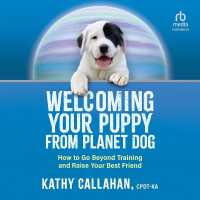Description
This book is an essential guide for anyone looking to drive sustainable technological innovation, providing a comprehensive toolkit of decision-making methods and real-world applications to effectively manage technology in the era of Industry 5.0.
Sustainable technological innovation is critical for building a more sustainable future. As the world faces increasing environmental challenges, there is a pressing need for new and innovative technologies that can reduce resource consumption, mitigate environmental impacts, and promote sustainable development. This book focuses on the vital role of decision-making processes in achieving sustainability through technological innovation in the context of Industry 5.0. By delving into various decision-making methods and approaches employed to facilitate sustainable technological innovation across essential industries such as manufacturing, agriculture, and energy, the book will present both theoretical and applied research on managing technology, including decision-making connected to Industry 4.0 and 5.0, artificial intelligence, and other revolutionary techniques.
The book covers a wide range of topics, including multiple attribute decision theory, multiple objective decision-making, patent mining, big data analytics, and other decision-making methods and techniques, and features case studies and reviews that highlight real-world applications of sustainable technological innovation in different industries. The exploration of various decision-making methods and approaches for sustainable technological innovation makes this book an essential guide for those looking toward a sustainable Industry 5.0.
Readers will find the book:
- Emphasizes the role of decision-making processes in enabling sustainable technological innovation, providing a unique perspective on the subject;
- Covers a wide range of topics related to decision-making for sustainable technological innovation, including decision theory, multiple attribute and objective decision-making, patent mining, big data analytics, and case studies;
- Provides real-world examples and case studies that demonstrate the effectiveness of decision-making processes in promoting sustainable technological innovation across various industries;
- Features the latest research and developments in the field, ensuring that readers are up-to-date on the most current thinking on decision-making for sustainable technological innovation.
Audience
Researchers, practitioners, and students in the fields of computer science, data science, engineering, and mathematics, specifically interested in decision analytics and machine learning algorithms.
Table of Contents
Foreword xiii
Preface xv
Part I: Frameworks for Sustainable Technological Innovation 1
1 Green Technology Planning in Developing Countries: An Innovative Decision-Making Framework 3
Vamsidhar Talasila, Chandrashekhar Goswami and Muniyandy Elangovan
1.1 Introduction 4
1.2 Related Works 5
1.3 Proposed Methodology 6
1.3.1 SWOT, G-TOPSIS and Integrated GASM Methods 6
1.3.2 SWOT–GASM Method 7
1.3.3 Process of Grey Analytical Hierarchy 7
1.3.4 Grey Numbers 9
1.3.5 G-TOPSIS Approach 10
1.4 Results and Discussion 13
1.4.1 Ranking of SWOT Factors 14
1.4.2 Grey Analytical Hierarchical Process Results 14
1.4.2.1 Overall Ranking of SWOT Subfactors 14
1.4.2.2 Ranking of Threats Subfactors 16
1.4.2.3 Ranking of Opportunities Subfactors 16
1.4.2.4 Ranking of Weaknesses Subfactors 17
1.4.2.5 Ranking of Strengths Subfactors 17
1.4.3 Grey TOPSIS Results 18
1.4.3.1 WO Strategies 19
1.4.3.2 ST Strategies 20
1.4.3.3 SO Strategies 21
1.4.3.4 WT Strategies 21
1.5 Conclusion 22
References 22
2 Evaluating Sustainability Indicators for Green Building Manufacture with Fuzzy-Based MODM Technique 25
Chandrshekhar Goswami, Muniyandy Elangovan and Puppala Ramya
2.1 Introduction 26
2.2 Related Works 27
2.3 Proposed Method 28
2.3.1 Enhanced Fuzzy DEMATEL 29
2.4 Results and Discussion 32
2.5 Conclusion 41
References 41
3 Sustainable Energy Options: Qualitative TOPSIS Method for Challenging Scenarios 45
Muniyandy Elangovan, Puppala Ramya and Chandrashekhar Goswami
3.1 Introduction 46
3.2 Related Works 48
3.3 Methods and Materials 49
3.3.1 Preliminaries 50
3.3.1.1 Models of Absolute Qualitative Order of Magnitude 50
3.4 Analytical Hierarchy Process Method to Compute Weights 51
3.5 The Proposed Q-TOPSIS Technique 52
3.6 Results and Discussion 53
3.6.1 A Q-TOPSIS Investigation that Demonstrates How to Choose Sustainable Energy Sources 53
3.6.1.1 Alternatives, Criteria, and Indicators for Sustainability Assessment 54
3.6.2 Results 54
3.6.3 Method Comparison 56
3.6.4 Results Comparison and Sensitivity Analysis 59
3.6.5 Enabling Specialists to Employ Various Degrees of Precision 62
3.7 Conclusion 64
References 65
4 Sustainable Education in the Age of 5G and 6G Networks: An Analytical Perspective 69
Kambala Vijaya Kumar, Yalanati Ayyappa, T. Preethi Rangamani, Eswar Patnala, Vinay Kumar Dasari and Gudipalli Tejo Lakshmi
4.1 Introduction 70
4.2 Related Work 71
4.3 Methodology 72
4.3.1 Elements for Hierarchical Structure 72
4.3.2 Students 72
4.3.3 Teachers 72
4.3.4 Relationship Between Learning and Teaching 73
4.3.5 Teacher: Intermediary Between Students and Technology 73
4.3.6 Analytical Hierarchy Process 73
4.4 Result and Discussion 74
4.4.1 Target Layer 74
4.4.2 Layer of Criteria 77
4.4.3 Discussion 77
4.5 Conclusions 80
References 81
Part II: Sustainable Technology and Data Security 85
5 Optimizing Sustainable Image Encryption Strategies in Industry 5.0 Using VIKOR MCDM Methodology 87
I. Shiek Arafat, R. Premkumar, M. Vidhyalakshmi, C. Priya and Muniyandy Elangovan
Introduction 88
Image Encryption 89
Multiple-Criteria Decision-Making (VIKOR) Method 93
Conclusion 98
References 99
6 Sustainable Cryptographic Solutions for IoT: Leveraging MOORA in Evaluating Algorithms for Limited-Resource Environments 101
Muniyandy Elangovan, R. Premkumar and B. Swarna
6.1 Introduction 102
6.2 Materials and Method 106
6.3 Analysis and Discussion 109
6.4 Conclusion 113
References 114
7 Optimizing Microwave Device Performance with SPSS Analysis 119
Muniyandy Elangovan, G. Dhanabalan and H. B. Michael Rajan
7.1 Introduction 120
7.2 Materials and Methods 123
7.3 Results and Discussion 125
7.4 Conclusion 135
References 136
8 Enhanced Microgrid Security: Naive Bayes Versus Random Forest in Attack Detection Accuracy 139
A. Prince Kalvin Raj and S. Pushpa Latha
Introduction 140
Materials and Methods 142
Naive Bayes 143
Novel Naive Bayes Algorithm Execution 143
Random Forest 145
Results and Discussion 146
Conclusion 149
References 150
9 Enhancing the Accuracy of Detecting Air Pollution Using Random Forest Algorithm Comparison with Support Vector Machine 153
M. Santhosh and K. Nattar Kannan
9.1 Introduction 154
9.2 Materials and Methods 157
9.2.1 Data Preparation 159
9.2.2 Random Forest Algorithm 159
9.2.3 Support Vector Machine Algorithm 160
9.2.4 Statistical Analysis 161
9.2.5 Results and Discussion 161
9.3 Conclusion 165
References 166
Part III: AI and Decision-Making in Industry 5.0 169
10 Efficient Human Threat Recognition Using Novel Logistic Regression Compared Over Linear Regression with Improved Accuracy 171
P. Sai Sateesh and Vijaya Bhaskar K.
10.1 Introduction 172
10.2 Materials and Methods 173
10.2.1 Problem Description 173
10.2.2 Logistic Regression 174
10.2.3 Linear Regression 175
10.2.4 Statistical Analysis 175
10.3 Results and Discussion 176
10.3.1 Analysis of Iterative Results 176
10.3.2 Statistical Analysis and t Test Comparisons 177
10.3.3 Comparison of Overall Accuracy 179
10.3.4 Discussion on Results 179
10.3.5 Limitations and Future Directions 179
10.4 Conclusion 180
References 181
11 Optimizing Uber Data Analysis Using Decision Tree and Random Forest 183
I. Vasanth Kumar and K. Nattar Kannan
11.1 Introduction 184
11.2 Materials and Methods 188
11.2.1 Study Design 188
11.2.2 Dataset Description 189
11.2.3 Data Preparation 189
11.2.4 Decision Tree 190
11.2.5 Random Forest 191
11.2.6 Statistical Analysis 193
11.2.7 Methodology Summary 193
11.3 Results and Discussion 194
11.4 Conclusion 199
References 200
12 Decision-Making in Malware Detection Through Advanced Imaging Techniques 203
Rohan Alroy B., Shivaprakash S. J., Akshat Chauhan and Jayasudha M.
12.1 Introduction 204
12.2 Literature Review 204
12.3 Proposed Architecture 205
12.4 Methodology 206
12.4.1 Metrics 206
12.4.2 Training Models from Scratch 207
12.4.3 Using Pretrained Models as Feature Extractors 207
12.4.4 Retraining Parts of A Pretrained Model 207
12.4.5 Ensemble Approach 207
12.5 Results and Comparisons 207
12.6 Research Gap and Future Works 208
12.7 Conclusion 209
References 210
13 Enhancing Decision-Making in Indian Legal Systems: Automating Document Analysis with Named Entity Recognition 211
Gaurav Pendharkar, Sukanya G. and Priyadarshini J.
13.1 Introduction 212
13.2 Related Work 213
13.3 Proposed Architecture 214
13.4 Proposed Methodology 215
13.4.1 Data Collection 215
13.4.2 Data Annotation 216
13.4.3 Legal Domain Adaptation 216
13.4.4 Evaluation Metrics 217
13.5 Results and Discussion 218
13.5.1 Token-Wise Comparison with Gold Standard 218
13.5.2 Accuracy is an Unsuitable Metric 219
13.5.3 Performance of the Model 221
13.5.4 Evaluation Metric Computed Value 221
13.6 Conclusion 221
References 222
14 Classification of Indian Legal Judgment Documents Through Innovative Technology to Aid in Decision-Making 223
Ujjwal Pandey, Sukanya G. and Priyadarshini J.
14.1 Introduction 223
14.2 Literature Survey 225
14.3 Dataset 227
14.3.1 Collection Methodology 227
14.3.2 Preprocessing 228
14.3.3 Exploratory Analysis 229
14.4 Proposed Methodology and Experimentation 230
14.4.1 System Architecture 230
14.4.2 Experimentation 233
14.5 Evaluation 234
14.5.1 Precision 235
14.5.2 Recall 237
14.5.3 F1 Score 238
14.6 Conclusion and Future Work 239
References 239
Appendix A. System Specifications and Hyperparameters 240
15 Revolutionizing Recruitment in Industry 5.0: An Efficient AI and Machine Learning–Based Applicant Tracking System 243
Shola Usharani, Gayathri Rajakumaran, Priyadarshini Jayaraju and Anuttam Anand
15.1 Introduction and Technical Background 244
15.1.1 The Impact of Technology on the Hiring Process 245
15.1.2 AI and Machine Learning in Hiring 245
15.1.3 Social Media and Hiring 246
15.1.4 Virtual Reality and Gamification in Hiring 247
15.2 Benefits of Technology in the Hiring Industry 248
15.3 Methodology 249
15.3.1 Research Design 249
15.3.2 Sampling 250
15.3.3 Data Collection 252
15.3.4 Data Analysis 253
15.3.5 Research Gaps 254
15.4 Research Methodology and Evaluation Metrics 255
15.5 Applicant Tracking System Predicted Outcomes and Calculations 256
15.6 Results 262
15.7 Conclusion 262
References 263
Index 265








